Monsters & Mommis: “Good Manners” Is a Tribute to Queer Motherhood
Monsters & Mommis is a five-week miniseries celebrating queer horror. It’s Halloween month, so let’s plan our costumes, get slutty, and, of course, watch some scary movies. This week, Juliana Rojas and Marco Dutra’s Good Manners (2017) starring Isabél Zuaa and Marjorie Estiano.
Two years ago, I slipped an oval of estrogen under my tongue for the third time. I felt the transformation within me, my veins coursing with placebo. I knew there wouldn’t be any effects for weeks, if not months, but change was coming. I could literally taste it.
Two days later, I dressed up for Halloween. I went with my girlfriend and some friends to a queer dance party and drank too much in the most pleasant of ways. The next day I posted pictures from the evening. It was my first time posting pictures in six months, my online coming out.
Four weeks later, I decided that I was never going to have biological children.
Before my parents had even accepted the reality of my transition, they begged me to freeze my sperm. I’d been out to them for less than a month, on hormones for a couple of weeks, and having children was not at the forefront of my concerns. I silenced them with my current understanding. If I ever wanted children, or was about to have surgery and thought I might want children, I could go off estrogen for a couple weeks without a problem.
During my one-month check-in my doctor explained that it wouldn’t be so easy. I’d have to go off hormones for months to ensure healthy sperm and the effects of the resurgence of testosterone might be traumatic. She highly recommended if I wanted biological children that I stop my new treatment for a month, and freeze my sperm now.
I wasn’t sure if I wanted children at all, let alone biological ones. But I also didn’t want to have to make this decision at 23 in the middle of the most dramatic period of my life.
Besides my reluctance to stop HRT, I simply couldn’t afford to freeze my sperm. I knew my parents would offer to help, but I didn’t want them involved in my choice to someday have or not have children. The decision became clear. I would never have biological children. I would never see my cute baby pictures and my girlfriend’s cute baby pictures in a single face. I would never have the ease of family building bestowed upon so many straight cis couples.
I spent the next several weeks crying on the subway whenever I saw a child. I cried because I was suddenly full of estrogen. I cried because I’d said goodbye to a certain type of family. I cried because my actual desire was never even available to me. It wasn’t about lost sperm. It was about a phantom uterus that lived only in my dreams.
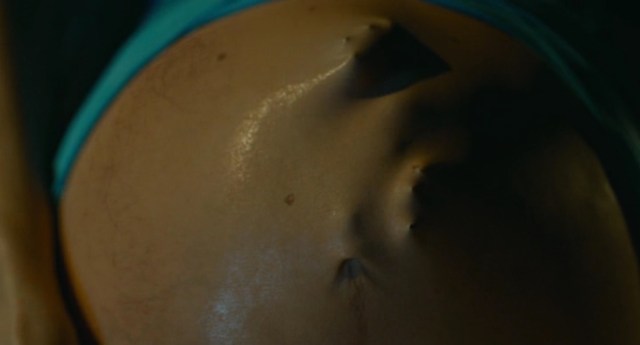
Missing out on all the fun
Good Manners is a lesbian werewolf fairy tale horror movie musical and it has as many thematic threads as it does genres. It’s about race and class divides in Brazil. And it’s about queer motherhood.
There’s something supernatural and vulnerable about motherhood that’s made it a tenant of horror cinema. Films like Rosemary’s Baby, The Fly, Prevenge, and, in a more abstract sense, Alien use pregnancy itself as a source of terror. Women lose control of the self, sharing their bodies with something less than human.
Then there is a whole separate group of horror movies about parenting. The Babadook, Bunny Lake is Missing, Goodnight Mommy, and The Others all explore a feeling of feminine inadequacy, a fear of failing one’s child either out of neglect or hatred. Literally or metaphorically, these mothers must confront the lack of a maternal instinct.
All these films have heterosexual protagonists, but Good Manners isn’t the first film to shift the narrative to a queer mother. Stewart Thorndike’s 2014 film Lyle starring Gaby Hoffman and Ingrid Jungermann is a queer take on Rosemary’s Baby. It’s an effective and frightening film, but ingrained in its conceit is a commitment to normative structures. The film asks whether the tale of a pregnant woman unable to trust her partner is changed when the partner shifts from man to butch woman. It’s certainly a queer film, but the alignment with Hoffmann’s character, the half of the couple that’s carrying the baby, makes it very similar to the heterosexual films listed above. In a sense, that’s the entire point.
Good Manners, however, is exploring something uniquely queer. Part of the reason it’s such an overwhelming and complex film is because its queerness forces it to embody both the body horror of pregnancy and the fear of parental failure, while also including the distrust of adoption found in something like The Omen and the rejection of an other found in works like Frankenstein and Freaks.
If the idea of having children as queer women is a fraught and complicated topic, Good Manners opens itself up to the mess, the devastating, beautiful mess.
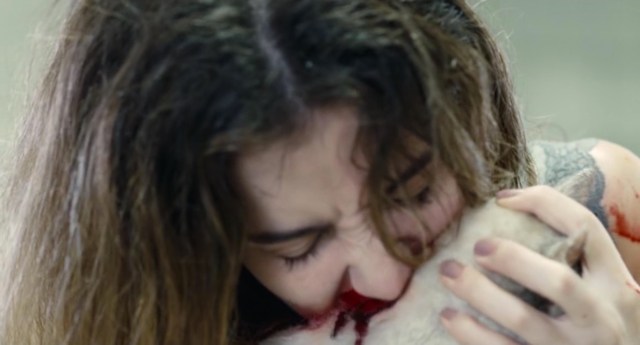
Hormones cause all sorts of cravings
Good Manners begins with a pregnant woman making a mistake. Ana double-booked nanny interviews and she asks Clara to wait. The prospective mother and prospective nanny are opposite people. Ana is loud, Clara is quiet. Ana is white, Clara is black. Ana is high femme, Clara is not. Ana has an air of entitlement, Clara is just trying to make ends meet.
The first nanny Ana meets with has far more experience. She explains to Ana her exact method for childrearing. And then she mentions a desire to speak to Ana’s husband. This nanny is used to a heteronormative household, where mothers and fathers act according to society’s rules. The 29-year-old queer and single Ana knows this won’t work.
Clara, on the other hand, has never had a job like this before. Her background is in nursing. During the interview, Ana experiences a sharp pain and Clara is able to help it subside. She stands behind her, hands softly on her arms, firmly on her back. Her touch is intimate. Ana breathes. And the pain disappears. Clara is hired.
Even before anything out of the ordinary occurs, Ana is not an average mother to be. Recently disowned by her wealthy family, she still hasn’t adjusted to independence. She begins to rely on Clara as a housekeeper, yes, but in some ways more as a mother and a partner. She expects her to do all the shopping and the cleaning and put together furniture for the baby and provide emotional support, seemingly unaware of the scope of her demands. But Clara needs the money. And it doesn’t hurt that Ana happens to be extremely attractive.
They grow closer and more isolated from the outside world. They dance together on Ana’s birthday. They hold hands at a doctor’s appointment. Clara gifts Ana a baby naming book. Ana opens up about her pregnancy and her family and Clara gives sage queer wisdom: “You don’t have to mind what people think and say. Fuck ‘em.”
Clara tries to maintain boundaries. She decides to leave Clara alone and go out to a bar. She even gets a number written on a napkin with a lipstick kiss. But upon returning home she falls back in deep.
Ana is rummaging through the fridge, lit by the full moon. Clara approaches and Ana begins to smell her. She runs her hands all over Clara. She grips her arms. She keeps smelling, face buried into Clara’s skin. She licks the top of her chest. She bites her shoulder. She licks her mouth. Their lips meet in intensity, tongues entangled. And then Ana bites her lip.
Clara pulls away, dabbing her bloodied mouth. Ana stands in front of her rabid, eyes burning orange.
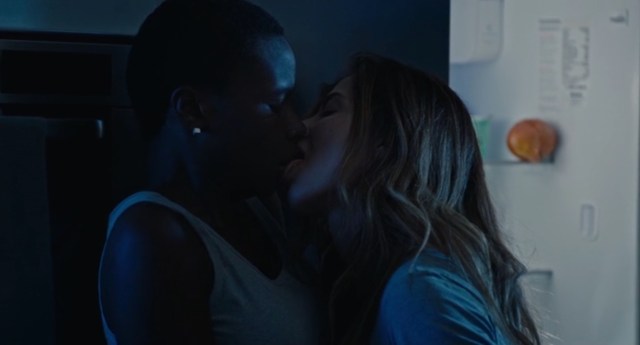
She can bite me all she wants
Clara begins keeping track of Ana’s “sleepwalking,” noting it only happens on nights when there’s a full moon. Nobody thinks werewolf. Clara and Ana are queer women and they respect the power of the moon.
Ana wakes up from an anxious nightmare and Clara comforts her. She gives her a massage that leads to a kiss. Ana grabs Clara’s hand and puts it on her breast. This time she’s wide awake. She knows what she’s doing.
They lie down on the bed, shirts off. Clara kisses down Ana’s belly, and doesn’t stop. She makes her cum. Then Ana lies on top of Clara, behind her, the unborn child between them. She makes Clara cum, and, more significantly, she makes her smile. Their partnership is consummated.
There is nothing grotesque about this moment. The ever-creeping sense of terror ceases. Ana and Clara are allowed to find comfort and connection in one another. It’s sexy. Ana is sexy. Her pregnancy is sexy.
But it’s less sexy a few hours later when she sleepwalks out into the world and devours a stray cat.
Clara tells Ana about the sleepwalking. She spares her the details, but Ana is still a wreck. She’s terrified for the safety of her child. She’s terrified that her family was right. She tells Clara the story of the one-night-stand that led to the pregnancy, and she clings to Clara more and more, trying to shape her into a traditional partner. Ana wants to be a good mother. She just doesn’t know what that means separate from conventional social structures.
Ana is proudly herself. She defied her family and mocks the titular as boas maneiras they tried to instill in her. But just because someone has the courage to be different, doesn’t mean those expectations aren’t still internalized.
I’m proudly queer, happily trans, determined to never again live in the suburbs. And yet, I feel such a deep sadness when I think about how I’ll never be a dad playing catch with his son. No matter my actual values, part of me still equates parenthood with the missed opportunities of “Cat’s in the Cradle.”
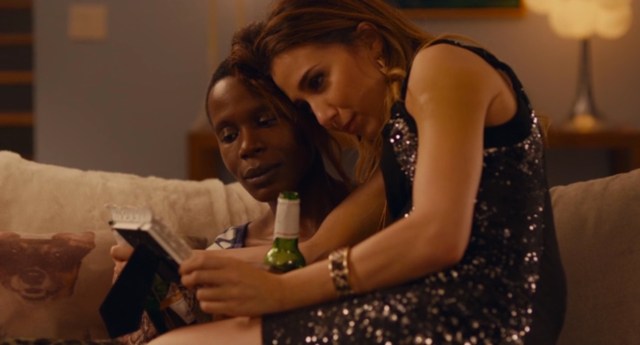
No matter gay, straight, or bi, lesbian, transgender life, you probably shouldn’t drink when pregnant
Ana will never be a parent.
A craving for pine nuts sends the dutiful Clara out into the night at the worst possible time. Ana is struck by a sudden pain. She screams in horror. She’s terrified for her child, for herself.
There’s a reason babies aren’t supposed to have claws.
Her darling little wolf baby, umbilical cord around his neck, tears through her abdomen, leaving Ana open and dead. Clara arrives home to the horrifying sight and grabs Ana’s gun. The child has scurried into the corner, wheezing and angry.
An instinct hits Clara. She can’t shoot. She approaches the child and unwraps the cord. Hairy and fierce, he’s still just a baby. He didn’t mean to do what he did. Clara quickly packs up and leaves. The movie turns into a musical, a homeless woman on the side of the road sings a song of warning to Clara.
“That child had better/Not cry/Hold it tight against you/As you cross to the other side/Walk steadily/And fear won’t be there/Don’t ever look back/That’s the advice we share”
But Clara does look back. She tries to leave the child by the river, but his cries won’t let her. Maybe it’s her love for Ana, or maybe it’s a maternal instinct buried deep within. She holds the child on the train and she begins to cry. She cries for Ana, she cries for the child, she cries for herself. She sings.
“What life holds in store/I still have no clue/But tonight/Under the rain/There’s only the two of us left/I will protect you”
Clara unties her shirt. She gives the crying baby her breast. She isn’t lactating, of course. But she gives him what she can. She gives him her blood. He bites and he sucks.
Clara becomes a mother.

First there was soy, then almond, then oat, now…
Seven years later, Joel is all grown up. Slightly malnourished and struggling in school, the secret wolf boy is clearly feeling the effects of his difference.
But Clara is doing the best she can. She’s holding Joel to a strict vegetarian diet and every month during the full moon she has him sleep in the “little bedroom,” his arms shackled to the wall. The next morning, she gives him a bath. She shaves the coarse body hair that grew in the night and trims his claws.
Joel’s friends Maurício and Amanda don’t understand why Joel’s mom is so strict or why he seems to always get sick once a month. The other parents and teachers and Clara’s landlady Dona Amélia are also suspicious. This has less to do with Clara’s parenting than it does her obvious difference. Nobody knows Joel is a werewolf, but they know he’s not black. They know he’s adopted.
Joel is the sweetest little boy. He longs for normalcy, but he loves his mother. He trusts her. Despite his young age, he understands the necessity of the little bedroom. He understands that it’s painful for both of them. While he’s hidden away and locked up, Clara lies in bed, staring at a picture of his real mother.
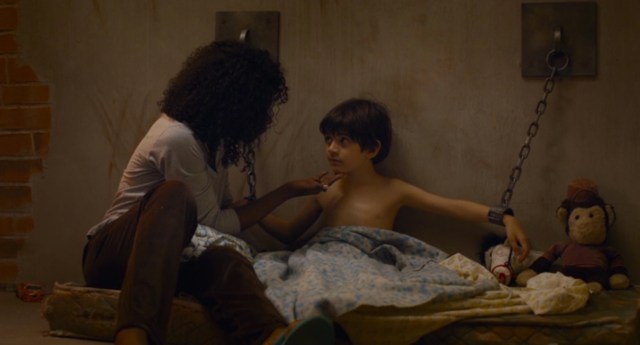
“The least you could do is read me a bedtime story.”
Dona Amélia cooks Joel a steak and the routine is broken. The meat causes a turn. He finds the picture of Ana and confronts Clara. “Who is she?” he asks angrily. “I look like her, just like Maurício looks like his father!” He screams and calls her a liar. She tries to get him to go to the little bedroom and he refuses. “You’re not my mother!” he says as he begins to transform. She locks him up but not before he gives her a deep scratch on her arm.
The next morning, he’s still angry. “Everything I do, I do it to protect you,” she tells him. He asks about his mother, and she describes her lost love. He asks about his father, and she truthfully tells him she knows nothing.
Joel isn’t satisfied. That night he’ll go looking for his father, staying out long past sunset, transforming in the moonlight. He’ll take an innocent life.
It’s especially painful that his desire for a father is what leads to this tragedy. It must be hard raising a child without a man in our heteronormative world. It must be even harder when that child is a boy. Clara has tried her best, but there’s a distance between her and her son. She has become his mom. But she’s definitely not his dad.
The next day, Joel returns home, and Dona Amélia sees him in his true state. Before she can call a priest, Clara stabs her with a sedative. She quickly packs up, ready to flee. But Joel refuses. Instead he tricks her, locking her in the little bedroom.
He just wants to be normal. He just wants to go to school and attend the festival that evening. He just wants to eat the food everyone else eats. He just wants a mom and dad who look like him, just like all the other kids.
But he can’t have any of this. At the festival he begins to turn. Clara, finally free, arrives just as he’s about to kill again. She shoots her son in the leg.
She quickly takes him home. She locks him up and removes the bullet. Outside the little bedroom, she can hear an angry mob forming. Everyone knows. And they want her son dead.
Joel is still in wolf form. Clara tries to touch his nose and he bites at her. She begins singing to him and he lets her touch his head. Her neighbors bang at the door. She undoes his chains. They both get up and she reaches out her hand. He takes it. They stand together, mother and son, ready to face the world.
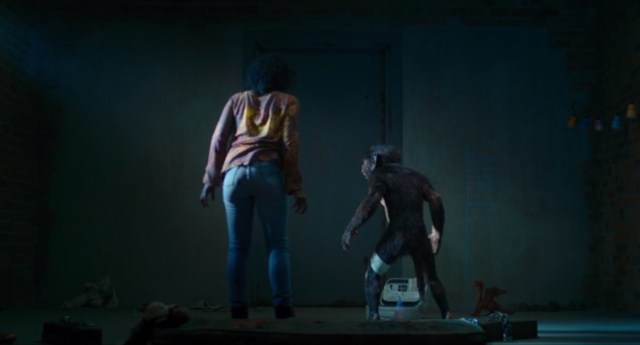
What to expect when you’re expecting
If horror is meant to reflect and heighten the fears deep within our souls, Good Manners manages to take every anxiety I have about someday being a parent and turn them into a series of healing nightmares. The same way Rosemary’s Baby may appeal to a cishet woman nervous about carrying a child, this film appeals to me as a queer trans woman who never will.
Even though I’m many years away from any possible motherhood, having already made decisions around my reproductive future has made it a lingering presence in my life. I think a lot about myself as a parent, even if I’m still not sure it’s something I want or if it will even be possible for me. I know some cis queer women and non-binary people know they’d never want to carry a child. Maybe their experience of the film is similar to mine. A haunting familiarity hidden within this fantastic speculative future.
I didn’t tell my parents about my doctor’s appointment. I didn’t tell them about my decision. They continued to talk to me about freezing my sperm, correctly unsatisfied with my glib and inaccurate explanation. I humored them, nodding along, telling them I’d ask my doctor at my next appointment. They were still coming to terms with my transition and they focused in on this one tangible thing. If they couldn’t keep their son, they could at least make sure he didn’t give up this last bit of normalcy.
A couple months later, sitting in the passenger seat of my dad’s car, I told him the truth. I told him that I couldn’t involve my parents in the choice to someday have children. I told him that it was complicated for me as a trans lesbian to have this genetic material to offer in the first place. I said all of this in a measured tone, trying my best not to cry.
He listened. He seemed to understand. But he hoped someday I’d still find a way to have children. He paused, searching for the words, mulling over how they’d feel. “I think you’ll be a really good mother,” he said. I let myself cry and he cried too, sitting next to the daughter he never could have expected, and never could have prepared for.
The truth is I don’t know if I’d be a good mother. Certainly at 25 I wouldn’t be. How would I not pass along my anxiety? How would I learn to be less controlling? How would I protect them in a world that hates me?
I don’t know if I’d be a good mother, but if that day ever comes, I know I’d try my best. I know I’d love that wolf baby as much as I possibly could.
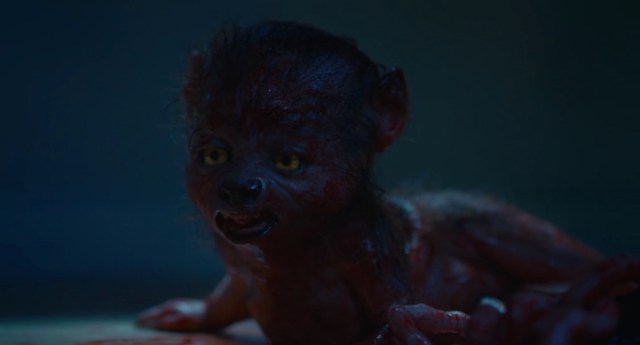
What life holds in store/I still have no clue/But tonight/Under the rain/There’s only the two of us left/I will protect you
Monsters & Mommis: “Memento Mori” Asks Us to Remember the Dead
Monsters & Mommis is a five-week miniseries celebrating queer horror. It’s Halloween month, so let’s plan our costumes, get slutty, and, of course, watch some scary movies. This week, Tae-yong Kim and Kyu-dong Min’s Memento Mori (1999) starring Gyu-ri Kim, Park Yejin, and Yeong-jin Lee.
The week after I came out I went to The Strand and bought two books: Gay Berlin and Transgender Warriors. Instead of memoirs or theory, my instinct was history. It felt impossible to take on this new identity without understanding those who came before me. Maybe I felt indebted to my ancestors. Or maybe it was my way of ignoring the overwhelming present, to get lost in the past and the experiences of others.
While everyone may not go out and buy history books, this impulse is far from uncommon. As queer people, we often latch onto examples of others further along than ourselves. We obsess over those who make casual what to us feels confusing. Sometimes this happens when we’re coming out, and sometimes it happens long beforehand. It may take years for us to realize why we were so obsessed with that one friend or that one teacher or that one movie star.
I talk about the 2001 Canadian classic Lost & Delirious more than I probably should. I adore the movie for its big adolescent feelings and Léa Pool’s artful direction and Piper Perabo’s angsty hotness. But mostly I love the movie because of its perspective. Our narrator is not one of the two girls in the lesbian relationship. It’s the younger, new girl at school: Mischa Barton’s Mouse. I was shocked to discover most people do not read queerness onto Mouse viewing her as a straight girl outsider. But to me the whole movie is so obviously the beginning of her sexual awakening.
There is another movie more explicitly centered in this perspective, where a girl obsesses over her classmates’ torrid affair, as she explores her own identity. It also happens to be a horror movie. Imagine if Lost and Delirious was a well-written ghost story and you’d be describing the 1999 Korean masterpiece Memento Mori.
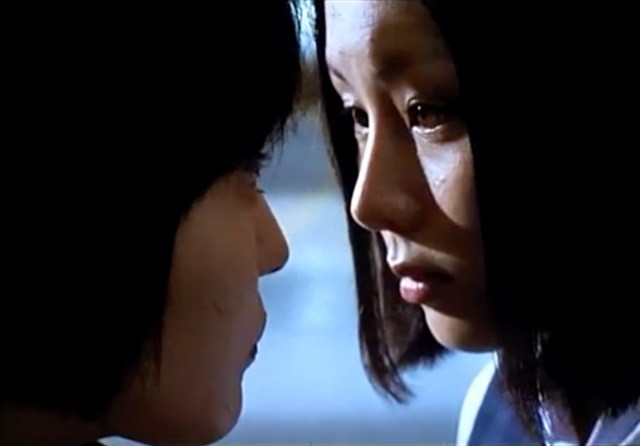
There is nothing/There is anything
Kim Tae-yong and Min Kyu-dong’s Memento Mori is technically a sequel. It’s the second entry in the five film Whispering Corridors series. But the films have little in common except their all-girls high school settings.
This film begins with Min-ah discovering a red journal. “The first kiss is like the smell of fresh apples. I’ve smelled the blood in your lips, that I’ve touched with my tongue.” Min-ah flips through and sees pictures of her classmates Hyo-shin and Shi-eun. She imagines them kissing and slams the journal shut. She leaves it on the ground.
Then she runs back and takes it.
Min-ah is rather plain. She’s friends with the popular girls, but doesn’t quite fit in with their cattiness or their boy talk, mostly centered on their teacher Mr. Goh. She does what they say and acts how they act, because this is how she can make it through the world of high school. But there’s a lack. And every time she opens the journal it’s filled.
As Min-ah reads, we witness Hyo-shin and Shi-eun’s courtship. Hyo-shin has a bob and a button nose. Shi-eun is tall and has a short haircut. Even though they’re wearing the same school uniform, they have a baby butch-femme dynamic going on.
They get caught hiding in a literal closet and are given detention where they’re tasked with scrubbing a drained pool. While Shi-eun runs around being silly, Hyo-shin cleans diligently, lost in thought. She asks Shi-eun if she wants to share a journal. They go up to the roof and cuddle. Shi-eun talks about being hard of hearing. Hyo-shin says it makes them perfect for each other because she hears things. She says she heard a bell go off the first time she saw Shi-eun. The girls laugh. They’re so darn cute.
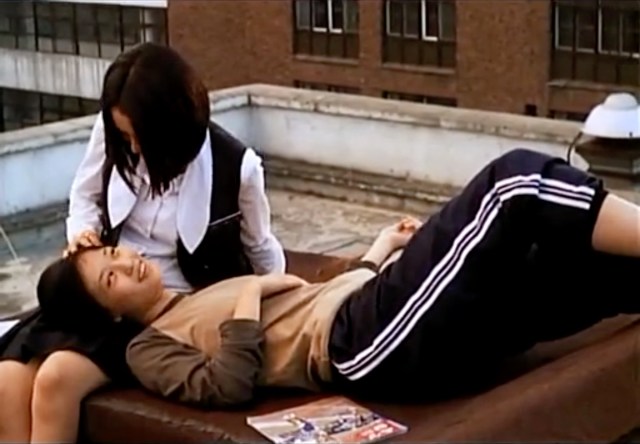
Perhaps there is/Perhaps there isn’t
This isn’t a journal from some distant time. Hyo-shin and Shi-eun are Min-ha’s current classmates. She watches them in the halls as they telepathically communicate. It’s been months since that first journal entry and one month since they’ve last spoken. 31 days and 8 hours, Hyo-shin specifies.
Min-ha doesn’t know how they communicate or how long they’ve been apart, but she can tell a shift has occurred. She keeps reading the journal, hungry for clues, eager to enter their private little world.
The girls were outsiders even before their affair was discovered. Hyo-shin was bullied for a poem she wrote for class and Shi-eun was called out by their choir teacher because of her disability. But through all of this the girls had each other.
When they meet on the roof in the present we still don’t know what changed between them. Hyo-shin mentions that she might be pregnant. She says this with a lightness adding they’ll have a baby of their own. She wishes Shi-eun a happy friendship birthday. And then she brings up suicide. The whole time Shi-eun wants to leave. She seems overwhelmed and conflicted and ready to end this interaction. But before she goes back to class she tells Hyo-shin that she misses her. Min-ha hides off to the side listening to everything.
Min-ha has class with Shi-eun and she makes a successful attempt to communicate with her telepathically. Shi-eun seems upset by this. Min-ha’s first trial at replacing Hyo-shin has failed. She cannot simply take on the journal as her own. She doesn’t know Shi-eun or Hyo-shin or their connection. She’s just an outsider, longing for something similar.
Hyo-shin is not replaceable. Not even when she jumps off the roof.

Said there isn’t/It’s not true
Driven by guilt, connection, and curiosity, Hyo-shin’s death only increases Min-ha’s interest. She keeps pressing Shi-eun to open to her. She keeps reading through the journal. Her friends start to mock her. They ask if she’s dating Shi-eun. They call her a traitor. But she doesn’t care.
Hyo-shin seems to be communicating with Min-ha. Sometimes this feels like the desperate pleas of a girl who wants justice. Sometimes it feels like the angry haunts of a girl who’s jealous. Min-ha learns that Hyo-shin and Mr. Goh were having sex. Hyo-shin presented this to Shi-eun as if it wasn’t a big deal, but it, obviously, was. Hyo-shin was a child. And she even says that she didn’t feel like she could say no. Suddenly the talk of pregnancy seems like more than a fantasy.
Min-ha reads the journal in class, and sees the words “memento mori” glued on letter by letter. She removes them revealing a translation: Remember the dead. As Min-ha reads these words, Hyo-shin’s hands begin crawling up her body. They reach under her skirt. Min-ha is panicked, unable to move. She moans something between a scream and an orgasm. And then she slams the journal shut.
Hyo-shin’s haunting of Min-ha is unique in its eroticism. The rest of the school simply gets her wrath. And they deserve it. Tired of hiding, Hyo-shin and Shi-eun decided to publicly hold hands. The other students threw things at them and called them names. Shi-eun became filled with doubts while Hyo-shin found herself more determined. She marched into Shi-eun’s classroom and began making out with her in front of everyone. For Shi-eun this was the end.
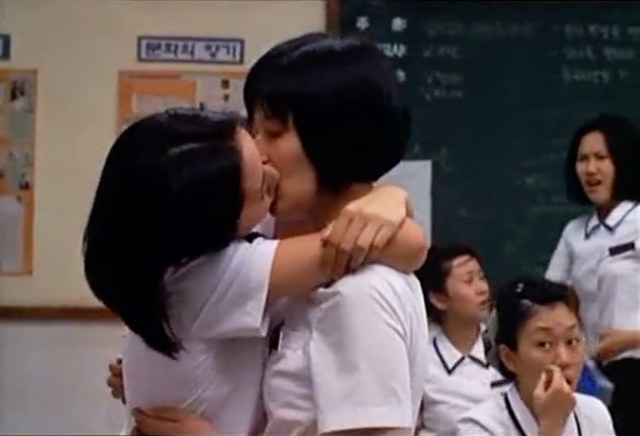
No one knows/No one cares
Hyo-shin’s ghost takes over the school. She locks everyone inside. She possesses many of the students. She throws objects around and uses the electricity as an expression of her emotions.
She kills Mr. Goh.
She remembers her breakup. She remembers telling Shi-eun she was going to kill herself and Shi-eun saying she didn’t care. She sits in this moment. We sit in this moment. And then she opens the doors and lets the school run into the rain.
Everyone is outside except Min-ah who stays lying on the ground and Shi-eun who walks slowly behind the others. Min-ah telepathically apologizes to Shi-eun for losing the journal. Shi-eun looks back with a new determination. She tells her that it’s okay. They’ll just write another one together.
The film ends with Min-ah opening the door to the roof, light rushing towards her. This fades to Hyo-shin singing “Happy Birthday” into a camcorder. And then one last memory: Shi-eun and Hyo-shin jumping around happily on the roof as the sun sets on their love.
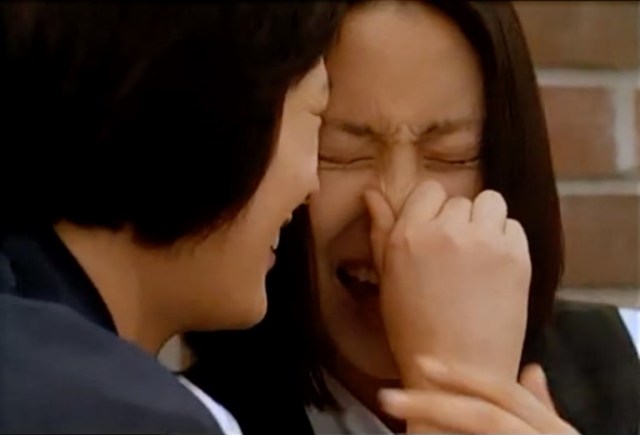
We know nothing/We know everything
When we read queer history we’re not only learning about those who came before us. When we listen to our elders we’re not only gaining wisdom. When we observe our braver peers we’re not only finding inspiration. We’re also faced with the reality that we exist because of these other people. Our experiences of queerness, as difficult as they may be, are easier, because there were others who lived before us.
There’s a certain amount of survivor’s guilt that comes with looking back. It’s easier to be Shi-eun’s second girlfriend than her first. It’s easier to be yourself when you know there are others out there like you.
Memento Mori is a devastating film, but it’s not without hope. Its very existence demands hope. It was one of Korea’s first explicitly queer films. And while one of its queer characters commits suicide, this is never framed as a punishment for her behavior. It doesn’t even arrive at the end as a cheap conclusion to the plot. It happens a third of the way into the film, giving the characters time to grieve and grow, and Hyo-shin’s ghost time to find peace.
Hyo-shin was a model for Min-ah. And all three girls got to be a model for countless queer teens. Whispering Corridors is one of the most popular Korean horror films of all time, and here was this sequel, seen by so many, teaching a lesson in queerness. I hope kids saw the beauty in Hyo-shin’s feelings. I hope they felt the ache in her loss. I hope they saw in Min-ah and Shi-eun a way forward. I hope they learned to love themselves.
This is a ghost story. This is a horror movie. This is two decades of queer lives free to live. May we all keep writing in our shared journal, telling our stories for those who need it most.
And may we all remember the dead.
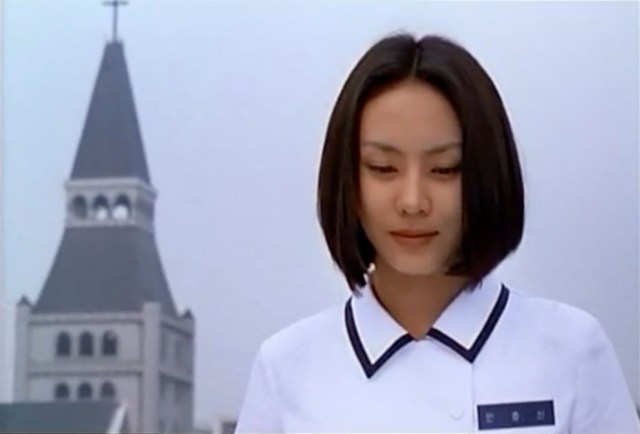
Everybody is me/I am everybody/Like the truth becomes a lie ~ Hyo-shin’s poem
Monsters & Mommis: “The Hunger” Is All About Fuckbois
Monsters & Mommis is a five-week miniseries celebrating queer horror. It’s Halloween month, so let’s plan our costumes, get slutty, and, of course, watch some scary movies. This week, Tony Scott’s The Hunger (1983) starring Catherine Deneuve, Susan Sarandon, and David Bowie.
Men can be terrible. Dating men is a curse. They can be selfish and cruel and they just might ruin your life. I don’t know this from experience. I’ve never dated a man. I just know what friends have told me.
I wish I could stop there. I wish I could shout patriarchy and ride off into the sunset satisfied that my sexual orientation is the best of all the sexual orientations. But I have some unfortunate news to share: Women and non-binary people can be terrible. Dating them is a curse. They can be selfish and cruel and they just might ruin your life.
I regret to inform you, and myself, the fuckboi is gender neutral.
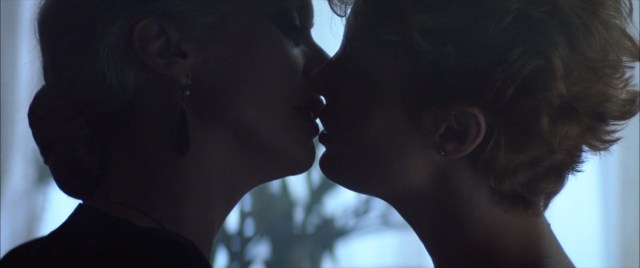
But like being gay is still the best
I’m pretty sure Tony Scott was not thinking about the queer dating scene when he chose to make The Hunger. Based on Whitley Striber’s novel of the same name, this tale of slick vampirism and sick love simply had all the sex, violence, and fantasy needed for Scott’s frenetic burgeoning style.
It’s a baffling movie. The plot is convoluted and the editing is relentless. Every moment is twelve moments as Scott jumps between locations and time periods, sounds and images. It’s lacking in any sort of clear thematic depth. Achieving “coolness” is its raison d’être.
But none of that is inherently negative. Especially in a movie starring Catherine Deneuve, Susan Sarandon, and David Bowie. Especially in a movie that features one of the best lesbian sex scenes of all time.
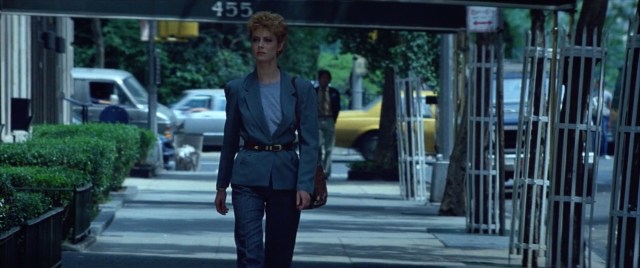
If you look like this you’re allowed to vote for Jill Stein
The movie begins at a techno punk concert. Everyone has eyeliner and spiked hair and most people are wearing sunglasses inside. Miriam and John stand out in the crowd. They’re also wearing sunglasses, but while the rest of the crowd is chaotic, they’re ethereal in their perfection. They are from another time. Literally.
They pick up a man and a woman and bring them back to their house. As they begin to make out with their respective partners (with lots of tongue flicking), we cut back to the singer at the club, and we cut to a rabid monkey hissing in a cage. They each rip off their pendants, reveal a small blade, and slice their never-lovers’ throats. The monkey eats its companion.
Then we meet Susan Sarandon’s Dr. Sarah Roberts. She works at the Park West Clinic, home of the monkeys, a research facility on the study of rapid aging. Compared to the otherworldly beauty of Deneuve and Bowie, Sarandon feels human. There’s certainly nothing attainable about her perfect face or short dykey haircut, but she has a natural warmth.
Miriam and John sensually fuck in the shower and renew their vow to be together forever and ever. But unfortunately for John this is their last moment of bliss. The next morning he wakes up, and after five hundred years of vampire-induced youth, he’s begun to age.
Despite this unsettling development, they keep their regular Tuesday/Thursday music date with neighbor kid Alice, the gayest pre-teen to ever live. She chomps on gum and takes polaroids of Miriam, before playing her violin. She’s infatuated with Miriam. How could any tomboy resist?
John tries to ask Sarah for help, but she doesn’t believe his rapid aging. He sits in her waiting room withering away. Desperate for blood he almost attacks multiple people before confronting Sarah with her mistake. Then he returns home and, sadly, eats Alice.
It doesn’t even work. He continues to age.
Miriam is distraught about John’s rapidly approaching death, but not that distraught. This has happened before. Despite her promise of forever she has had many, many lovers over the years. Her transfusion of vampire blood will sustain them for a while, but they all have an expiration date. Unwilling to part with any of them completely, she keeps them all in coffins in the attic where they remain conscious. She says she loves them all too much to let any of them fully die.
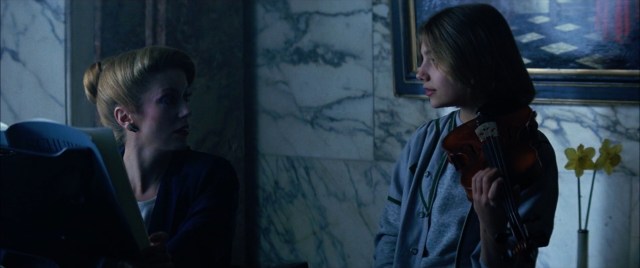
“I am bursting with hormones.”
Sarah, now very concerned about John’s health, visits their mansion. Miriam tells her that John has left for Switzerland. She spies a police officer approaching and asks Sarah to come back some other time. She’s made a decision. She has found her next victim, her next love.
The spell has been cast. Sarah is consumed with thoughts of Miriam. She has visions of her, she dreams of her, and the next day she’s back at the mansion. Sarah is wearing a blue blazer over a white t-shirt. She’s flustered. She has no idea why she’s there. Miriam invites her in.
They drink sherry. Miriam plays piano and Sarah strips down to her shirt. Her sleeves are rolled up. She sits down in a chair incorrectly. She is already adjusting to her new gay lifestyle. Her nipples are very visible.
Miriam plays her a love song and makes a point to clarify it was written about two women. Sarah takes a deep breath, letting the sherry shoot to her brain. “Are you making a pass at me Mrs. Blaylock?” she asks.
“Not that I’m aware of, Sarah,” Miriam answers plainly.
Sarah spills sherry on her white shirt, a red splash right above her nipple.
Classical music begins. They’ve moved to another room. Sarah rubs a wet cloth on her shirt in slow motion. It becomes even more see-through. It clings to her skin. Miriam runs her hand across Sarah’s back. She sits in a chair and puts her feet up, eyes never leaving Sarah’s body.
Sarah turns her back and takes her shirt off. She looks in the mirror and smiles at Miriam through her reflection. Miriam goes to her. She delicately places a hand, first above her breast, then up to her neck. She kisses her. As their lips meet, Miriam’s hand drifts down Sarah’s chest. She pulls away and Sarah leans in for more. Miriam grants her wish.
Cut to Sarah lying in bed wearing only a pair of black panties. A mirror is propped up against the side of the bed. Miriam in elaborate black lingerie joins her and they kiss once again. Miriam remains slow and methodical. Sarah remains hungry. She reaches for her. She pulls her in. She arches her back in rapturous pleasure as Miriam’s lips circle her nipple.
The white curtains that surround the bed billow in an artificial wind. She lets Miriam bite her arm. She lets Miriam suck her blood. She enjoys it. She wants more. She wants all of it.
Miriam looks up, blood dripping down her mouth, her hair wavy to one side like Veronica Lake. Sarah follows her instinct, she follows her needs. She returns the favor and bites Miriam’s arm until it draws blood. She sucks and sucks.
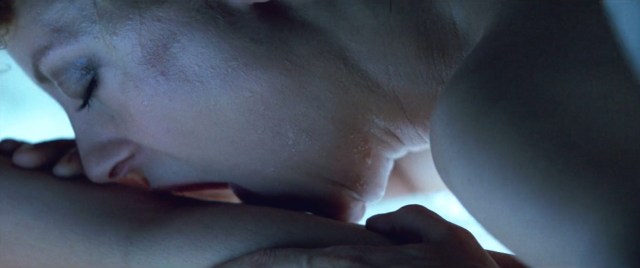
*speechless*
Sarah grows ill. She tests her blood in the lab and discovers it’s half hers and half inhuman. She cannot eat and yet she has an incurable appetite. Her boyfriend is concerned. She returns to the mansion for answers.
Miriam was expecting Sarah. She’s done this before. She puts her in bed and tells her she’ll be okay. She tells her they are now one being. She tells her they’ll be together forever and ever.
Miriam brings home a man for dinner. But Sarah’s boyfriend crashes the party. Miriam lets him in, her jealousy crafting a new meal plan. She pushes him towards the starving Sarah and she goes downstairs to play piano.
Sarah emerges with blood on her mouth. It seems as if she’s done it. Miriam and Sarah kiss once again and Sarah undoes her pendant knife. She stabs it into her own throat.
This seems to break Miriam. When she brings Sarah up to the attic all of her past lovers emerge from their coffins. The house rumbles and they attack. Miriam yells, “I love you all!” But they don’t care. They move towards her, rotted corpses from dust to decay. She falls over the banister and to her final death.
The last scene finds Sarah, still alive, living in a home with a man and a woman. The woman approaches her and they kiss. As she looks out over the city she hears Miriam cry her name.
“Sarah… Sarah…”
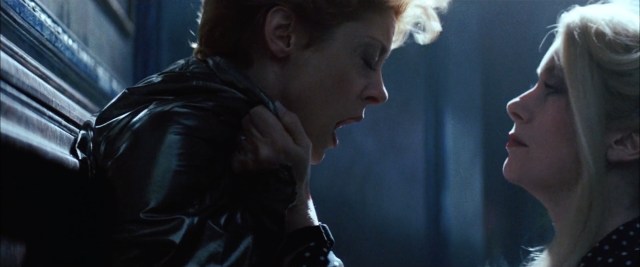
When she inserts her umbrella of Cherbourg
It’s a trope to have a queer female vampire seduce a previously straight woman who ultimately resists her pull and murders her. The idea is the protagonist is just queer enough to put on a show for the male director and audience member, but still straight enough to choose heterosexuality in the end.
The Hunger is not nearly cohesive enough to fit into this narrative.
The ambiguity gives room to play and there are just enough context clues to craft a much more enjoyable story. Miriam does not represent homosexuality. She spends the first half of the movie destroying her male lover. No, if Miriam is a metaphor for anything it’s the fuckboi of all our nightmares.
Miriam tells all her loves that they’re her forever, but they all fade. And yet she keeps them trapped, refusing to let go. She collects people. And when it’s time to move on she does so immediately. She brazenly flirts with everyone and then insists she doesn’t know what they’re talking about. She even seduces a pre-teen dyke, getting off on the attention, and leading to the girl’s demise.
Sarah does not choose heterosexuality. The film ends with her kissing another woman. No, she simply chooses to search for a healthier queer relationship. It’s not exactly uncommon for a cis woman to fall hard for the wrong person when they’re first coming out. And it’s not uncommon for them to still hear their ex-lover’s call long after they’ve moved on to smarter choices.
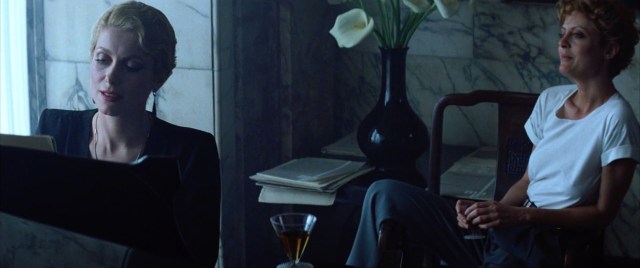
Anyone still looking for a couples costume?
I would never be so bold to suggest this was the intended interpretation. But projection is a part of being a queer audience of 20th century cinema. We do it all the time with work that is merely subtext or not even. Why not do the same for a film that has a matter-of-fact lesbian romance and an extended scene of nipple play?
The pleasure of a director choosing style over substance is as an audience we get to create our own substance. The pleasure of ambiguity is filling it however we please.
Maybe your queer interpretation is different than mine. That’s part of the fun. But for me there’s no hunger quite like the one I feel for a vampire who sets out to ruin my life.
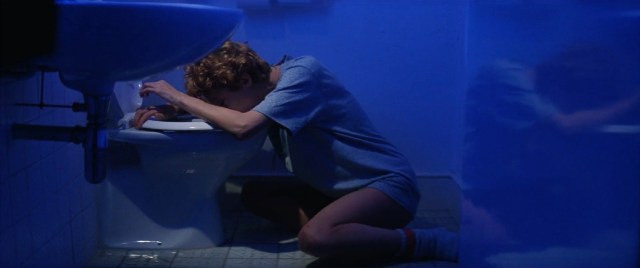
I wrote this essay while someone left me on read
Monsters & Mommis: Three Trips to Hill House
Monsters & Mommis is a five-week miniseries celebrating queer horror. It’s Halloween month, so let’s plan our costumes, get slutty, and, of course, watch some scary movies. This week, three adaptations of Shirley Jackson’s classic novel: Robert Wise’s The Haunting (1963) starring Julie Harris and Claire Bloom, Jan de Bont’s The Haunting (1999) starring Lili Taylor and Catherine Zeta-Jones, and Mike Flanagan’s The Haunting of Hill House (2018) starring Michael Huisman and Kate Siegel.
The first time I saw a naked woman was in a horror movie.
I was 11 and I’d rented The Shining from Blockbuster. My parents had a rule that I could watch R-rated movies if they were based on a book I’d read and I’d just devoured Stephen King’s novel. I scurried to my room and popped it in my 13″ TV/DVD player combo.
I loved horror movies and horror books. I rarely got scared and when I did I enjoyed the feeling. But due to the oddly specific restrictions on my viewing the horror I’d consumed had been a mix of classics and corny PG-13 affairs. I’d yet to discover the potential for gore. I’d yet to discover the potential for sex.
The scene begins with Jack Nicholson investigating the haunted Room 237. He enters the bathroom and finds a woman lying in the tub. She’s young and bland and modelesque. He looks on practically salivating, his face like a cartoon wolf. She stands. She’s completely nude. She walks towards Jack and the camera and us.
I grabbed my remote control, finger on the off button, eyes darting back and forth between my bedroom door and the woman on the TV. I didn’t understand the feelings inside me. I’d never been so scared.
Jack meets her in the center of the room. They embrace. They kiss. My heart raced, sweat gathering between my hand and the remote.
Jack’s kiss is long and deep, until, suddenly, he stops. He looks in the mirror and the camera whips around to reveal the woman is a corpse, old and decaying… and laughing.
I jumped so suddenly that I fell off my bed. Smack onto the carpet. I lay there, face down, filled with giddy shame. The woman’s laughter continued.
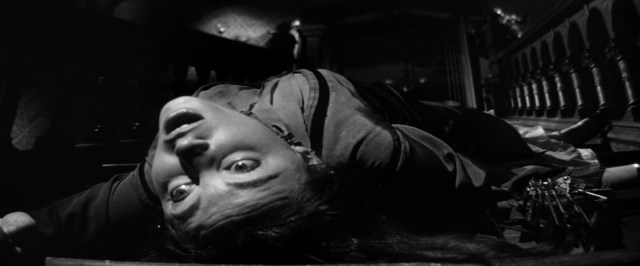
When you see a vagina for the first time
The Shining owes its existence to an earlier novel. Two decades before Stephen King invented a labyrinthine building haunted by the protagonist’s psychology, Shirley Jackson did the same. King called Jackson’s The Haunting of Hill House “one of only two great novels of the supernatural in the last hundred years.”
But where King’s novel reveals, Jackson’s holds back. Where King finds sex and fear and fantasy, Jackson finds subtext and terror and ambiguity.
Jackson’s novel has captivated readers and writers and filmmakers since its release. It’s influenced the genre through King and Kubrick and a long list of other famous (mostly male) names. It’s also directly been adapted for the screen three times by three different men.
They share the same house, the same skeleton, but thematically, stylistically, even narratively, little else. They’re drastically different works, but they do have one common thread. From 1963 to 2018, they all have a queer woman named Theo.
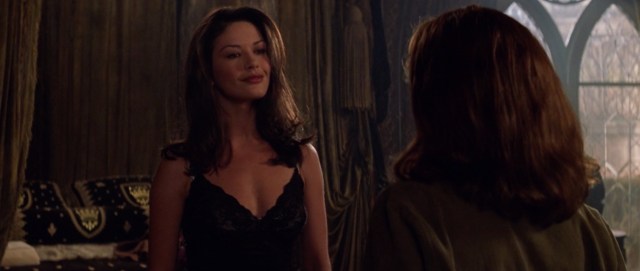
But only one has Catherine Zeta-Jones
The first adaptation is also the most loyal. Robert Wise got his start directing movies for Val Lewton, but eventually became known for classic musicals West Side Story and The Sound of Music. The Haunting falls somewhere in between.
Shot on 30mm anamorphic wide angle lenses that weren’t even officially approved for production, the movie has an epic (and distorted) feel to it. But learning from his low-budget roots, and the source material itself, Wise’s film knows when to withhold.
More than ghosts, this film is about the psychology of its lead character, Eleanor. Nell for short. She’s spent her entire life taking care of her demanding and critical mother, but now her mother has died. Racked with guilt and a loss of purpose, she eagerly signs up for Dr. John Markaway’s investigation into the paranormal history of Hill House.
Nell is a strange protagonist. Especially for a Hollywood genre film. She’s quiet and anxious. She’s bitter and unpleasant. She’s cold and desperate. Julie Harris is perfect in the role, never attempting to make Nell even the slightest bit charming.
Joining Nell at Hill House are Theodora, chosen for her ESP, Luke, the young man set to inherit the building, and Markaway himself. All the other expected visitors fail to show up out of fear.
From the moment she enters the house, Theo is oozing with sexuality. Her extrasensory perception doubles as a tool for flirting as she guesses Eleanor’s nickname and makes a comment about new clothes she senses Nell brought. By this point, Nell is just relieved to see another person. Her enthusiasm makes it seem like she might be flirting back and Theo responds with a glint in her eye.
Claire Bloom plays Theo with a casual confidence. She’s not a caricature of queerness or eroticism. She’s simply a woman who knows what she wants and who she is. The first night she invites herself into Nell’s room and when Nell refuses she easily responds, “Alright we have a date for breakfast.” Then she mentions that she approves of Nell’s secret plan to change her hair.
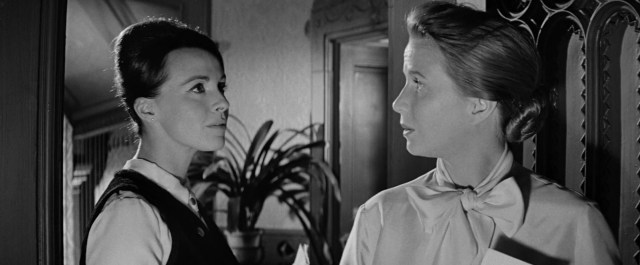
“What kind of haircut do you want? Do you want me to do it right now?”
That night they experience their first encounter. Theo screams and Nell rushes to her room. They huddle together on Theo’s bed, cold from the spectral presence, warm from each other. With only some turns of the doorknob, a few loud bangs, some interesting camera angles, and two committed performances, Wise creates a scene of absolute terror. And sex appeal. When the moment passes, they giggle together, in shock and sensual solidarity. The disbelief of a phantasmic orgasm.
This is the closest they’ll be. As the house increases its hold on Nell, she increases her resistance. She begins to obsess over a crush on Dr. Markaway and become cruel towards Theo. She tells Theo she’d rather be innocent than like her and when Theo asks for clarification Nell says, “Now who’s being stupid and innocent. You know perfectly well what I mean.” Later she adds, “The world is full of inconsistencies, unnatural things. Nature’s mistakes they’re called, you for instance.”
These bigoted turns are muttered with a frantic bitterness. She desperately wants to be accepted in this outside world, but she keeps manifesting justifications for why she might not be. Nell isn’t necessarily queer, but this film is still the most thematically linked to queerness. It uses Theo’s identity as a metaphor for freedom. Nell is in a sense closeted, if not from queerness, then simply from living. She’s so concerned about doing the right thing that she’s done absolutely nothing. Even the death of her mother, the first active choice of her life, was not something she initiated, but something she allowed to happen by ignoring her mother’s cries.
Until this fateful moment Nell had always done the right thing. But Theo’s entire life is wrong. And while Nell is falling apart due to this one, understandable, moment of weakness, Theo is completely unphased. If the lesson Nell needs to learn is to forgive her imperfections, Theo has surpassed her tenfold. Theo has learned, be it from confidence or ESP, that her imperfections aren’t imperfections at all. She’s just gay.
As Nell continues to descend into madness, or the house continues to grab hold of her depending on your beliefs, the style increases only slightly. There are brief moments of practical effects like when a wood door seems to bend like rubber. But mostly it’s just editing and camera work and Harris’ troubled performance.
By the time, Nell rebuffs Theo’s kindness for the last time and drives her car directly into a tree, the question of what exactly has occurred cannot be answered. Theo says maybe Nell will be happier staying with the house, even in death. Maybe it was her destiny. Or maybe she was simply unable to accept her inner truth, whatever that may have been.
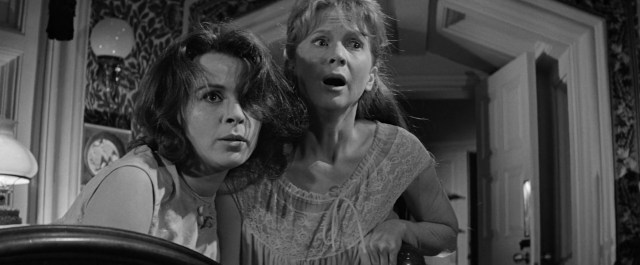
Sex Hair
Jan de Bont’s 1999 remake has a bad reputation likely because it’s bad. Known for the Speed films and gay classic Lara Croft: Tomb Raider – Cradle of Life, de Bont trades in the stylistic and thematic subtlety of the novel for big special effects and a convoluted plot. But any movie starring Lili Taylor that makes Owen Wilson play a character with his brother’s name and features a bisexual Catherine Zeta-Jones is not without pleasures.
This version starts almost exactly the same as the original. Nell’s mother has died and she lives with her sister and she’s miserable. But this time, it’s not a ghost study she signs up for but a sleep study. Dr. Marrow is investigating fear and he needs unwitting subjects. He invites a group of people to Hill House with the intention of dropping subtle hints about its haunted origin and hoping their imaginations get the best of them.
While Bloom’s Theo presented a grounded sexuality, de Bont and Zeta-Jones have none of these concerns. She enters the film wearing a black mini dress, tights, black boots, and a feathered red jacket. She says she packs a lot, because asking people to carry her bags is how she makes friends. She quickly tells Nell that she has a boyfriend and a girlfriend and she’d love for them to all live together if they could just get along. She changes in front of Nell getting off on her discomfort.
It would seem that Theo’s sexuality has benefited from the thirty plus years between adaptations. Her ability to bluntly say she has a girlfriend is new at least. But as the film goes on her bisexuality feels less like a part of her identity and more like a coded way of saying she’s promiscuous.
During the repeated scene where she and Nell huddle together on their first haunted night, the intimacy is gone. There’s a scare and the women jump apart instead of together. And after this scene, Theo seems to lose all interest in Nell, focusing instead on Owen Wilson’s Luke. The tender queer flirting of the original is replaced with adolescent expressions of heterosexuality.
The subtlety of the horror is gone as well. Statues move and ghosts appear in bed sheets. The late 90s CGI is fun and silly, but quickly grows tedious as the movie goes on and on. Most of the second half is just Nell running around trying to solve the mystery of the house. She discovers that one of the ghosts of Hill House was her great grandmother, an unnecessary justification for her destined presence. The film ends with her getting the main bad ghost trapped in the wall, freeing the ghosts of a lot of children, and killing herself. Her own ghost floats to the sky in a moment that would be funny if you weren’t so desperate for the movie to end already.
The greatest joys of this thematically empty movie arrive in its most explicit moments: Theo’s sultry opening scenes and towards the end when Owen Wilson is suddenly decapitated.
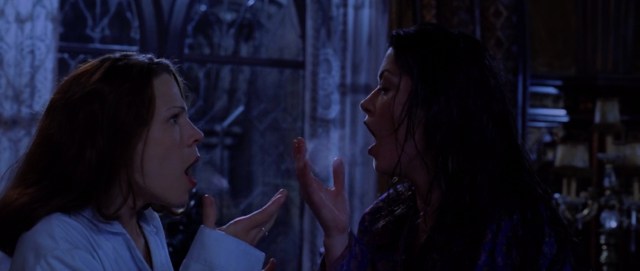
When your hands are cold but you’re a considerate partner
Last October, Netflix released a ten-episode adaptation of Hill House. Horror director Mike Flanagan’s radical take on Jackson’s novel abandoned and morphed much of the original story. Rather than focusing on one troubled young woman, he instead created a family. There is still a Nell, a Luke, and a Theo, but who they are is vastly different.
The show jumps between the past and the present. In 1992, Hugh and Olivia Crain move into Hill House with their five children: Steven, Shirley, Theodora, Luke, and Nell. They’ve been flipping houses: moving into places with potential, fixing them up, and selling them for a profit. They’re only supposed to be at Hill House for a summer.
The first half of the show spends an episode with each sibling. We begin with Steve, the skeptic. On their last night in the house, Steve slept through the chaos that led to his mother’s death, and he maintains everything that occurred can be blamed on mental illness. And yet he’s a famous horror novelist who used the lore around his family to sell paperbacks.
Shirley thinks of herself as the responsible sibling and chose an even more morbid profession. She and her husband run a funeral home where he’s front of house and she’s downstairs prepping bodies.
Theo lives in Shirley’s guest house despite having a PhD and a job as a child psychologist. She’s gay in the Shane McCutcheon sort of way, picking up women and then quickly putting them down. She wears gloves that she removes only to shake the hands of her young patients.
Luke and Nell are twins. Luke has spent most of his life battling drug addiction, going in and out of rehab, and alienating himself from everyone in the family. Nell has had an equally troubled life. Haunted by visions of what her child self named “The Bent-Neck Lady,” she’s lived a life in dread. Her brief moment of happiness vanished when her husband dropped dead within a year of their marriage. She spirals. Her episode ends with her returning to Hill House and being hung from the floor where her mother jumped.
These episodes range in quality and the back half of the show struggles to sustain itself. It’s not that the show isn’t good. It’s very good, and, at times, even great. But Flanagan overestimates our investment in all the characters, or, I should say, my investment in all the characters. And as the ghosts become more explicit, and the barrage of special effects no longer illicit fear, the characters are all we have.
With Nell dying in the middle of the series, the emotional arc of the show shifts to Hugh and Steve. Whereas the novel and the two films are centered around a uniquely disturbed female character, Flanagan’s ensemble begins and ends with the men. Hugh sacrifices himself to the house in the presence of his eldest and Steve accepts the truth of his family’s trauma. The show opens with Steve, it closes with Steve, and, I regret to say, Steve is even less interesting than his name.
It’s not that Flanagan’s approach is inherently wrong. Just like it wasn’t inherently wrong for Bradley Cooper to take a three film Hollywood legacy about a female star in an abusive relationship and make it about an alcoholic male rocker. But it is disappointing given the revolutionary nature of both the novel and the original film. It’s also disappointing considering how good the show is when it does focus on Jackson’s two women.
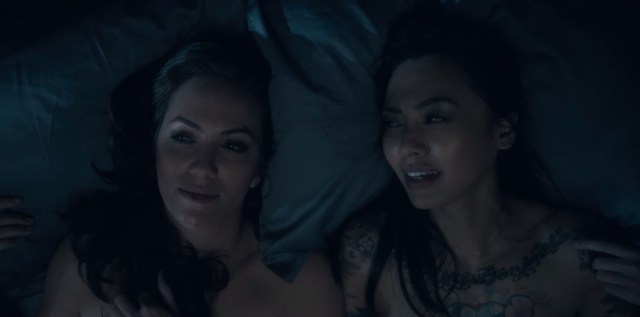
“I think you should wash those gloves.”
The best episode of the show is almost definitely the one about Nell. But I think the missed potential is even clearer in my personal favorite, Theo’s episode: “Touch.”
It begins with a brief scene where 1992 Theo comforts her sister through a nightmare. Nell grips her hand tighter and tighter until Theo pulls away. She realizes in horror that nobody is in bed with her. At least nobody living. We then go to the present where Theo is comforting someone once again, this time a patient, a young girl who speaks of a specter named Mr. Smiley haunting her new foster house.
Theo explains to the girl that it’s normal to put up walls when scared; it’s normal to disassociate. Gloveless, she shakes the girl’s hand and seems disappointed by the experience. We learn the reason for the gloves is ESP. Usually, by touching someone she can understand their deepest pain. It’s why her mother gave her the gloves, a wall of her own. But with this girl she gets nothing.
Because of her present-day cool girl exterior, Theo’s flashbacks are the most revealing. We watch a portrait of a precocious child who has decided her family’s well-being is entirely her responsibility. Shirley may take on the role of caregiver, but it’s actually Theo who managed the emotions of her siblings. Living in Shirley’s guest house may seem like a result of arrested development, but it’s really a way for Theo to keep an eye on her sister.
Theo’s ability to see the pain of others with merely a touch becomes a metaphor for anyone who grew up in an abusive household, hyperaware of conflict, taking on everyone’s burden as their own. She carries within her a frantic desire to make things right. Her father may spend his whole life declaring, “I can fix it,” but Theo knows those who can actually do it, don’t say it out loud.
We learn that Theo came out to her family by fucking a bridesmaid at Nell’s wedding. There’s a lack of vulnerability to this approach, keeping this part of herself hidden for so long only to brazenly flaunt it as if it’s not a big deal. When she has sex in the present with a one-night-stand named Trish, she keeps her gloves on and continues this lack of vulnerability. For her sex isn’t about connection, it’s about distraction.
Troubled by the little girl and Mr. Smiley, she makes a sudden house visit. She awkwardly asks if she can see their basement to better understand the girl’s imagined trauma. Lying on the basement couch, she removes her gloves. She grips and feels and hurts. Back upstairs, gloves still off, she shakes the foster father’s hand. And then she really knows. This man has been molesting the girl. She’s taken the pain in exchange for knowledge.
The episode ends with Theo having sex with Trish again, this time without gloves. She tells Trish to touch her and we sense the start of a crumbling wall. But the moment doesn’t feel triumphant. It’s sad. The first steps towards abandoning our defenses are the hardest and Theo has so much further to go.
Kate Siegel is incredible in this episode and in the show as a whole. Theo is always sharp and cool in the presence of others, but her subtleties manifest so differently depending on people’s needs, and her willingness to open up to these needs. She’s a complicated character in the most complicated moment of her life, and Siegel portrays all of this with a watchable ease. And in this particular episode, written by Elizabeth Ann Phang, Siegel is given writing to match her performance.
It’s a shame then that the finale gives her such an empty final dream sequence. It’s a shame her story ends with her committing to Trish and throwing out her gloves. It’s a shame such a complex character is wrapped up neatly in a montage while her brother monologues.
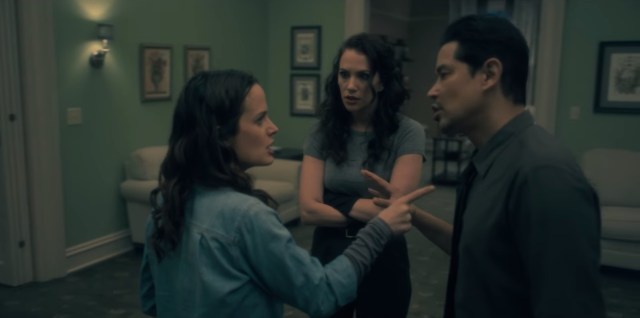
Homosexual exhaustion
The history of horror cinema is filled with queer women, but almost all of it was made by men. And almost all of it lives in subtext.
There’s nothing inherently lesser about this approach. As far as I’m concerned, the original adaptation remains the most accomplished. It’s less a question of whether subtlety is superior to explicitness and more about which stories and approaches and characters are given the freedom for this explicitness. Which stories get a naked woman kissing the protagonist before turning into the demon of their nightmares. Which stories get to rise above an ensemble. And which stories instead are forced to live exclusively in subtext and supporting roles.
As The Haunting of Hill House has found new life across decades, the queerness has become more explicit yet less important to the overall work. This doesn’t have to be the case. The most recent adaptation was a radical reimagining. That’s what I want: radical reimaginings. But the radical reimaginings I envision are ones that center queer women, not a man named Steve.
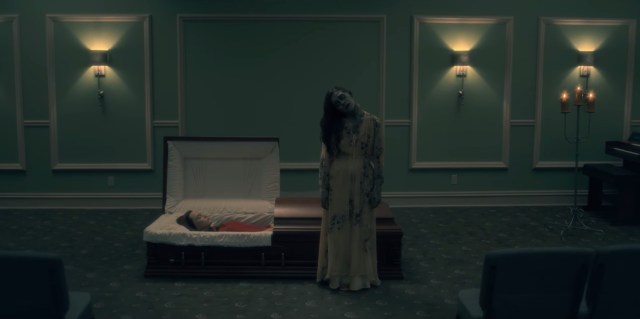
Why can’t they see us? We’re right here.
Monsters & Mommis: “Cat People” and “The Seventh Victim” Come Out of the Closet
Monsters & Mommis is a five-week miniseries celebrating queer horror. It’s Halloween month, so let’s plan our costumes, get slutty, and, of course, watch some scary movies. This week, a Val Lewton double feature: Jacques Tourneur’s Cat People (1942) starring Simone Simon and Mark Robson’s The Seventh Victim (1943) starring Kim Hunter and Jean Brooks.
The real horror is straight people.
Like many young cinephiles, my understanding of film history was framed by noted heterosexual filmmaker Martin Scorsese. Known for masterworks like Taxi Driver and Raging Bull, as well as some pretty good Leonardo DiCaprio movies, Scorsese has also been one of the most influential film historians of the last few decades. His enthusiasm is infectious and his documentaries A Personal Journey Through American Movies and My Voyage to Italy influenced me more than film school. Scorsese’s favorites became my favorites, and many remain to this day.
One of Scorsese’s heroes is producer Val Lewton. He gets a dedicated segment in A Personal Journey and Scorsese made an entire separate feature documentary all about him. One could argue nobody was more influential to the genres of horror, suspense, and thriller than Lewton. (Yes, not even Hitchcock.) Made with incredibly low budgets, Lewton and his collaborators discovered that limitations can lead to creative solutions. The fears we imagine are greater than anything we can see.
Scorsese spends a lot of time on these technical achievements. He talks about the way these films portray the psychology of terror. He touches upon the films as a metaphor for the immigrant experience. And he celebrates one of Lewton’s collaborators, director Jacques Tourneur. But missing in all this enthusiasm is another obvious thread of subtext. Missing is Lewton’s frequent screenwriter DeWitt Bodeen. Missing is the fact that Lewton’s best movies were gay.
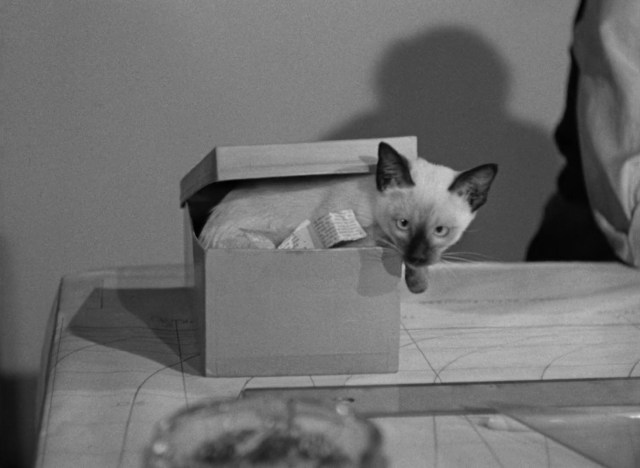
His first movie was called Cat People for gosh sake!
DeWitt Bodeen was a gay screenwriter and he wrote Val Lewton’s two best films, Cat People and The Seventh Victim. Made just a year apart, these two films complement each other. Despite having different directors, they’re formally similar. They have some of the same actors, some of the same character dynamics, and even share at least one character who seems to exist in both universes. They’re also both tragic explorations of shame and queer desire.
Cat People begins with, well, a cat. A panther anyway. Serbian immigrant Irena Dubrovna is drawing it at the zoo. She seems simple, content. And then she meets a man.
Oliver Reed approaches Irena and then walks with her when she leaves. They arrive at her apartment and she invites him in for tea. As they chat, and she shares the Serbian legend of the cat people that will haunt the rest of the film, it’s unclear how she feels about Oliver. She’s all smiles, but Oliver seems to just happen to her. Her detachment becomes sad. Her smiles become lonely. Maybe it’s less that she wants Oliver, and more that she wants someone. “You might be my first real friend,” she says to him.
The stilted awkwardness of their moments together are in sharp contrast with scenes of Oliver and his coworker, Alice. They chat and flirt and seem to have a real connection. It feels natural. It’s easy.
But Oliver has fallen for Irena. He tells her he loves her but mentions it’s weird that they haven’t kissed yet. He says in America when people are in love they kiss. She believes if she were to kiss him, if she were to open up her feelings, then she’d turn into a cat and kill him. She talks of something evil inside her, an impulse she can’t control. They postpone the kiss. And instead, of course, get married.
At their engagement party, another Serbian woman approaches their table and calls Irena sister. Irena is deeply troubled. The moment reads like a queer person being clocked. No one else at the party fully understands what just happened, but Irena is pulled out of her temporary fantasy. Her otherness has been underlined.
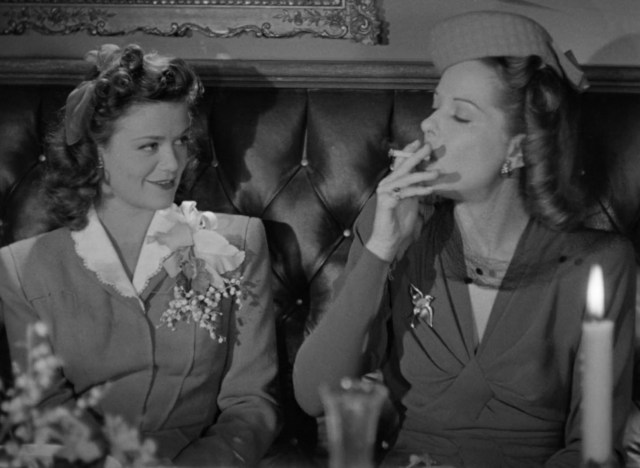
Irena and Alice never kiss but they do share gay looks
The rest of the film follows Irena as she fights her desires, and Oliver and Alice as they don’t fight theirs. Alice tells Oliver she’s in love with him. And Oliver tells Alice that until he met Irena he’d never been unhappy before. He longs to return to his cocoon of privilege. He longs for Alice.
It’s easy to read queerness into Irena’s refusal to sleep with her husband, but that’s an oversimplification of her struggle. She does not resist Oliver due to a lack of desire. She resists because she knows she is different and she knows her sexuality is wrong. Alice, however, is normal and she can love Oliver with ease. Oliver then represents both forbidden queer love and acceptable straight love. Irena is both an expression of denied female desire and a representation of Bodeen’s male gayness. He too was denied the simplicity that occurs when straight women fell for the men he loved.
The horror is also two-sided. Alice believes she is being stalked by Irena in panther form and moments of Alice walking down a dark street or being cornered in a swimming pool are iconic. But Irena’s internal struggle is just as frightening. When Irena’s psychiatrist, Dr. Judd, leans in close and tells her it’s all in her head and she should kiss him to prove it, we again see her faced with a split between her desires and what she’s told to desire. She tells Dr. Judd that she does not want to kiss him. She wants to kiss Oliver.
This moment inspires her to take a chance and do just that. But it’s too late. Oliver tells her he’s decided to be with Alice. “Believe me. It’s better this way,” he says. “Better? For whom?” she replies.
As if that weren’t bad enough, Oliver, Alice, and Dr. Judd decide to lock her in an institution. But Judd wants one more chance to help her first. What he really wants is another chance to force himself on her. He kisses her and she receives it coldly. And then, for the first time in the film, her transformation is confirmed. She turns into a panther and she mauls him.
Oliver gone, and horrified by her own ferocity, Irena goes back to the zoo. She opens the panther’s cage, and lets it maul her in return.
Oliver and Alice are free to live heterolly-ever-after. Good for them.
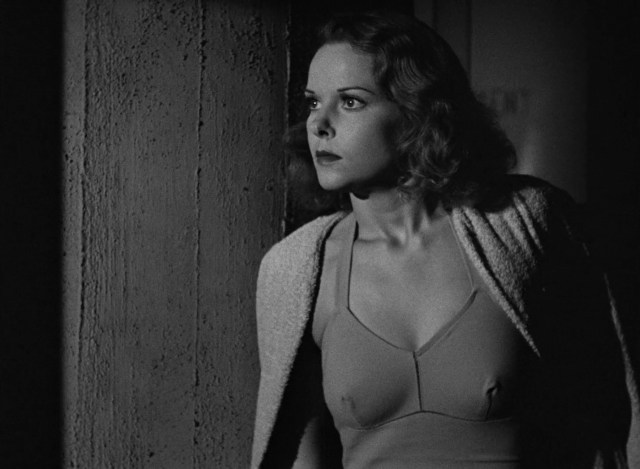
Alice has what every woman wants: a bathing suit with visible nipples
The Seventh Victim is an even stranger and messier film than Cat People. It’s a horror film with the convoluted plot of a noir. There are so many characters, so many plot points, so many twists. One of the film’s greatest shocks is that it’s only 70 minutes.
We’re introduced to Mary as a student at a boarding school. Her older sister, Jacqueline, has disappeared and stopped paying tuition and the headmistress offers to fly her to New York City to investigate. One of the teachers approaches Mary outside. She tells her that whether or not she finds her sister, she must never return to the school. The teacher left once but came back out of fear. “You have to have courage to live in the world,” she says. This is the first moment that feels coded as queer.
Upon arriving in New York, Mary learns that her sister has sold her hair salon. She learns that she rented a room in a hotel, but is never there, the room empty except for a chair and a noose. She learns that her sister has married a man named Gregory who doesn’t know where she is. But he can explain the noose. He says that Jacqueline always said life wasn’t worth living if you couldn’t end it.
Mary teams up with a private investigator but this ends in murder and she’s left frightened and even more lost. She tries to forget. She builds a life in New York and moves on. Then a man shows up at the school where she’s started working and says he knows where Jacqueline is hiding. This man is Cat People’s Dr. Judd.
Jacqueline appears only for a moment before disappearing once again. She’s striking, dark hair cut with short bangs, a vampiric femme fatale. She says nothing.
During this moment, the receptor of Bodeen’s queerness switches between sisters. Mary meets a young male poet eager to help solve the mystery of Jacqueline, and her flirtations with Gregory escalate. But at a party, attended by Dr. Judd, a woman explicitly confirms Jacqueline’s queerness, and her own. “Know her? We were intimate! Times we used to have together. I bet she never told you about that you’re too young.”
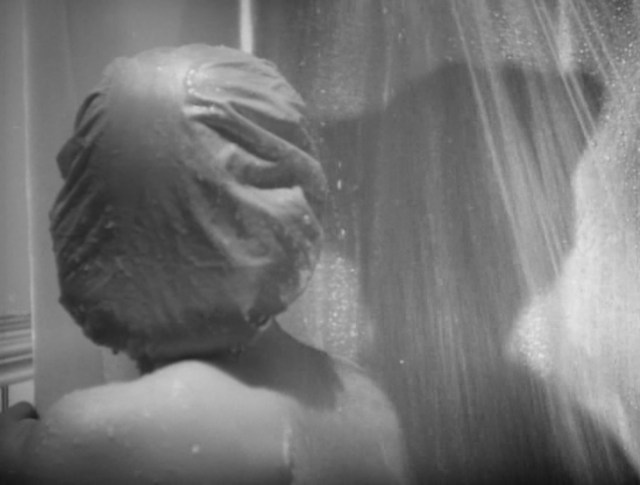
Sidenote: Hitchcock stole the Psycho shower scene from this movie
Mary and her ever-growing crew of amateur investigators discover that this woman, and the new owner of the salon, and most of the attendees of that party, are devil worshippers. Jacqueline was a devil worshipper too, but has changed her mind. The rest of the group views this as a betrayal and believes she must die.
Judd explains that Jacqueline was simply unhappy and latched onto this movement, only to realize they were not her cure. The group echo this sentiment after kidnapping Jacqueline and encouraging her to drink poison. They tell her she always talked of killing herself so it should be easy for her to do it now.
With the repetition of the character Dr. Judd and the groups’ brainwashing, there are echoes of conversion therapy and the medical establishment’s crusade against homosexuality.
And yet like in Cat People, the metaphor is not so simple. “Who’s to believe what is wrong and what is right?” one of the devil worshippers says. “What proof can you bring that good is better than evil?” This moment seems to imply they’re actually the gay ones. They’re creating new values and Jacqueline’s self-hatred prevented her from embracing this new truth.
Jacqueline is allowed to escape and flees to her hotel room. These moments are even more frightening than the stalking scenes in Cat People. Everyone is a potential threat to Jacqueline, including herself.
She finally makes it home and she meets her neighbor. This woman is played by the same actress as the other Serbian woman in Cat People. She tells Jacqueline that she’s ill and nearing the end. But she’s done embracing death. She’s going to go out and live, pretend as if she’s healthy, pretend as if she’s normal.
While Jacqueline was being very nearly murdered and stalked on the streets, Mary and Gregory were getting closer and closer. They finally confess this love to each other, but Mary explains that she has to resist because she could never betray her sister.
Back at the hotel, the sick woman leaves her room wearing a party dress. We hear a chair fall and a rope pull taut. The woman pauses for just a moment before walking down the stairs. We’re haunted by the knowledge of what Jacqueline has likely done.
Once again, the other removes herself. The straights get a happy ending.

I like Jacqueline’s TERF bangs and I’m not ashamed to admit it
Horror is my favorite genre, because it can take the worst elements of our world and make them fun. We succumb to manufactured fear, and, for a moment, let go of our own. It’s true that both of these movies end in suicide. But neither film can so neatly be tied into the trope of the tragic lesbian. Both films, I promise, are very fun.
Yes, they’re suspenseful, and creative, and just the right amount of unreal. But their thematic obscurity also allows for a certain thoughtful disconnect. Within the moral and narrative ambiguity, you can feel Bodeen grappling with his homosexuality. It’s not a case where the villains are straight and the victims are gay. It’s not a case where the villains are gay, reclaiming our power. Instead, we’re both. These films represent the psychological interiority of a queer person questioning their feelings and their shame. They show someone who is conflicted and sad, strong and certain.
The queer women of Val Lewton and DeWitt Bodeen’s work aren’t really queer women at all, at least not in a cisnormative sense. Bodeen is using women to represent his feminine side, so they are in a sense gay men performed by women. There’s something so complex and, dare I say, genderqueer about this expression.
But I wouldn’t expect Martin Scorsese to understand any of this. To him, to them, we’ll remain lost in the shadows.
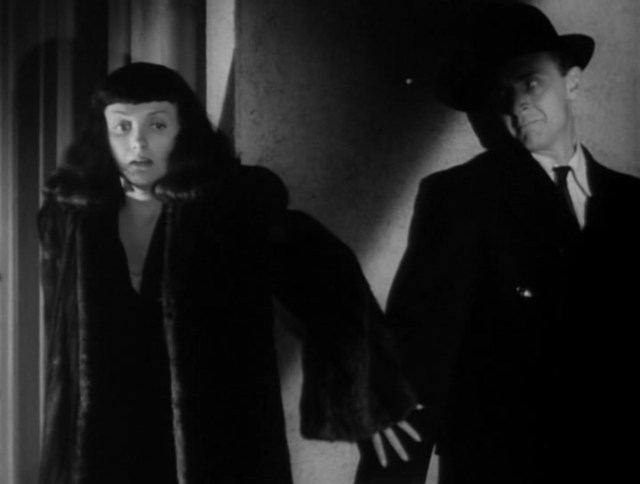
Val Lewton says “Gay Rights!”